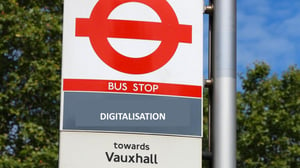Bus safety incidents: Save time and costs with digital reporting
Where there are buses, there are risks. We’re talking about 12-tonne lumps of metal, after all. And no matter how well your bus company manages those...
![]() Facilities Management
Facilities Management
Manage maintenance requests & streamline operations
CMMS
CAFM
EHS
Regulatory Compliance
PPM
EAM
Operations Management
Transportation Management
![]() Food Safety
Food Safety
Prove compliance and ensure standards are up to customer expectations
![]() Retail Task Management
Retail Task Management
Enable your teams to focus on delivering quality and achieve their goals.
Task Creation & Automated Follow-up
Unified Reporting and Data Analysis
Regulatory and Audit Monitoring
Full visibility of every task
IoT
Take action on your data to get ahead
Integrations
Bring mpro5 into your other tools
Automated Workflows
Make your work effortless with automated workflows
Managed Service
Supporting your operations, every step of the way
NEWS & INSIGHTS
Blogs & news
NEWS & INSIGHTS
GET IN TOUCH
GET IN TOUCH
2 min read
 Sam Roberts
:
Feb 1, 2022 1:45:00 PM
Sam Roberts
:
Feb 1, 2022 1:45:00 PM
Bus companies are under pressure. The pandemic and cost-of-living crisis have severely dented revenues, while soaring fuel prices are putting a great strain on operating costs.
Every penny matters. And for operators to keep delivering the service quality that passengers expect, they need to eliminate waste and inefficiency wherever they can.
Health and safety is one area that’s rife with cumbersome, time-consuming processes – most of them paper based. So if your bus company is looking to streamline workflows and costs, this is a good place to start.
%20(1)%20(1)-jpeg.jpeg?width=300&name=AdobeStock_294889939_Editorial_Use_Only%20(1)%20(1)%20(1)-jpeg.jpeg)
At the moment, bus companies generally record health and safety procedures and incidents in paper logbooks.
This paper-based approach might work in a single small depot, where operations are simple, accidents are rare, and only a handful of people need to keep and access records.
But most UK bus companies aren’t small and simple. They have multiple depots employing hundreds of people, and are often owned by large multinational groups that manage several other operating companies.
Whenever someone has to dig out and complete a logbook, they lose valuable minutes from their day. Multiply that across hundreds or even thousands of employees and it quickly adds up to large numbers of lost labour hours.
-jpeg.jpeg?width=870&name=FEATURED%20IMAGE%20(7)-jpeg.jpeg)
And that’s just for starters. If head office want to run a report on health and safety, it’s not a case of simply pulling data from a single source. A whole team of data gatherers, data-entry people and analysts must be assigned to the task, which could take weeks or even months to complete.
That, again, is an awful lot of money lost in people-hours. And even when the report is done, there’s no guaranteeing its reliability. Paper records rely on people’s care and diligence, and are only as useful as they are complete and accurate.
The fact is, however, that bus company employees are busy people. Admin and paperwork can slip down the list of priorities. And logbook entries can easily be missed in the heat of the moment, or simply written in batch as a box-ticking exercise long after the fact.
This means management have no quick, easy or reliable way of knowing their true health and safety status at any given time. They lack the data to know which processes are working, which are failing, and where further training or investment is needed.

Bus companies need a record-keeping solution that better serves the needs of their large, complex operations. One that saves time and money in these tough economic times, and which gives them the data they need to make intelligent business decisions.
With a smart workflow tool like mpro5, you can replace your unreliable paper logbooks with a single, digital audit for all your health and safety processes.
Instead of losing time writing, filing and following up on paper records, employees can complete all their health and safety admin quickly and easily using a mobile app.
Everything they do is stamped with a time and date, eliminating the chance of inaccurate entries. And they can even upload photos and video footage to confirm that critical tasks have been completed. This makes proving compliance much easier in the event of audits or investigations.
With mpro5, all health and safety data feeds into a single, central hub in the cloud. So instead of having data stored in silos across numerous depots and departments, everything is accessible in one place.
Health-and-safety reporting becomes a much quicker and simpler process. You no longer need teams of people to gather and trawl through endless paper records. You simply call up the data you need in an instant, with custom dashboards and visualisations that are relevant to you and your goals.
This allows you to monitor and report on the health and safety activities that matter most to you and your team, and to identify trends and spot potential challenges further down the road.
Above all, it helps your whole business work faster and more safely. And with faster, safer working comes less expense – and more profit.
Where there are buses, there are risks. We’re talking about 12-tonne lumps of metal, after all. And no matter how well your bus company manages those...

In the UK, standards relating to the cleaning of hospitals were last updated in 2007. Now, there are the new National Standards of Healthcare...

The Internet of Things (IoT) is being used by transportation and logistics companies to streamline internal processes, improve driver productivity...